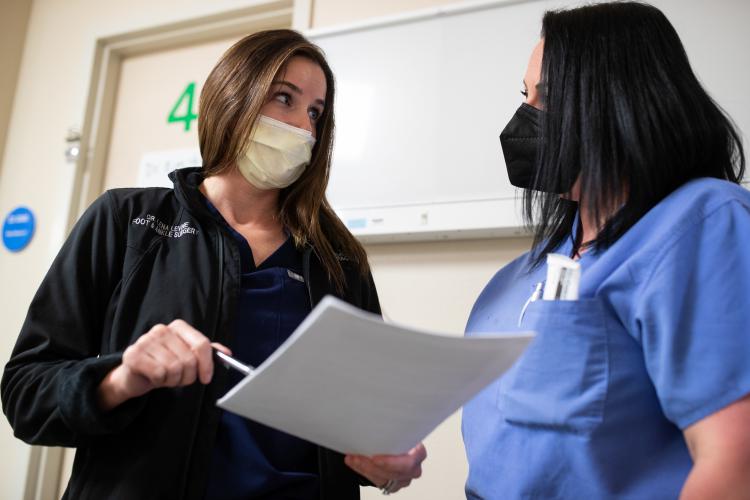
When a person with diabetes, cardiovascular issues, or other comorbidities loses a limb, it doesn’t just make it tougher for them to navigate through their day. It’s something that can dramatically shorten their lifespan.
Statistically, a patient with a chronic health condition is twice as likely to die within a year following a major amputation than they would be if the limb was saved. Over the past two years, the percentage of limbs that have been able to be saved at JPS Health Network has increased dramatically, according to Dr. Lena Levine.
The keys to saving limbs, Levine said, are getting care to patients as fast as possible before the situation is allowed to deteriorate and by staying on top of the situation, organizing care between different specialties at the health network.
“We started a task force two years ago to bring people from across JPS together to unite and coordinate our resources to save as many limbs as possible,” Levine, a podiatrist, said. “We wanted to make sure when someone in danger of losing a limb came in that we are able to act as efficiently and effectively as possible to try to save it.”
"I didn't know how bad it was until it was almost too late," I lost two toes, but my leg - and my life - were saved. I will forever be grateful for that."
In 2020, JPS reduced the number of non-traumatic amputations performed by 25 percent, according to David Crane, Service Line Administrator for Orthopaedics. Previously, the health network averaged 16 amputations per month.
“Our stretch goal was to reduce the number to 13 in 2020,” Crane said. “But we actually exceeded that goal and averaged 12. It’s a remarkable accomplishment that we plan to continue to work to improve.”
LVN Kristina Luna works to coordinate the symphony of specialists needed to get the appropriate care as quickly as possible to patients who are in danger of losing a limb.
“We see some of these people every week, so we develop a rapport and a relationship with them,” Luna said. “We need that sort of communication to be successful. They have my direct number and they need to know, if they have any concerns at all, to call me immediately so we can get on top of things as quickly as possible. That’s how you keep things under control.”
Levine said the relationships are built to last because they have to.
“This is something we’re going to be working on for life,” Levine said. “I’d say, when you’re talking about a patient who was on the verge of having a limb amputated, that the longest we’re going to be able to go without seeing them is going to be about three months.”
Fort Worth resident Gary Moore said he counted on Dr. Levine to save his leg after his health suddenly deteriorated in August 2019 following a stroke. A borderline diabetic, Moore said the stroke left him unable to walk. Then things got worse when he got in infection in his toes.
“Dr. Levine is an incredible person and an even more incredible doctor,” Moore said. “If not for her, I wouldn’t have a leg and, to be honest, I would probably be dead. I didn’t know how bad it was until it was almost too late. I lost two toes, but my leg – and my life – were saved. I will forever be grateful for that.”
As grateful as Moore is to sacrifice a couple of toes to save his leg up to his knee, Levine is, too. She said a major amputation shortens lives for a number of reasons including putting a massive strain on the heart and vascular system as well as causing a large, traumatic wound that has to heal. For an older patient with pre-existing health conditions, that could simply be too much to overcome. Losing a digit or two doesn’t carry the same devastating impact on the body.
Today, he said his wounds are nearly completely healed. He was recently fitted for a special shoe that will help him walk again.
Several teams work together to save limbs at JPS. They include Podiatrists, vascular, orthopaedic, and plastic surgeons who handle skin grafting. They also include the Surgical Optimization Unit team, which helps diabetics control their blood sugar and patients to control their weight, stop smoking and control their blood pressure – all elements that could contribute to loss of limbs – work together with countless others to save limbs.
“When you come to see us, you’re going to get a team effort,” Levine said. “That, combined with timely access and an expedited approach can be the difference between losing a limb and saving it.”
